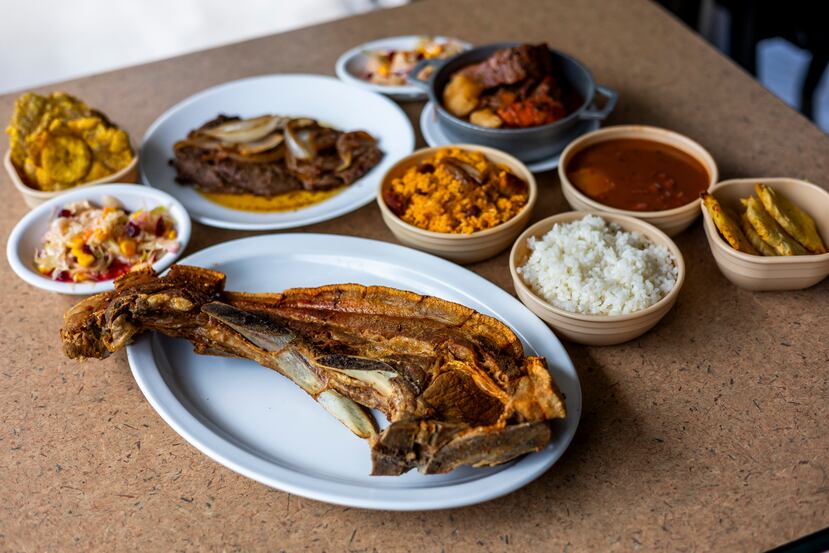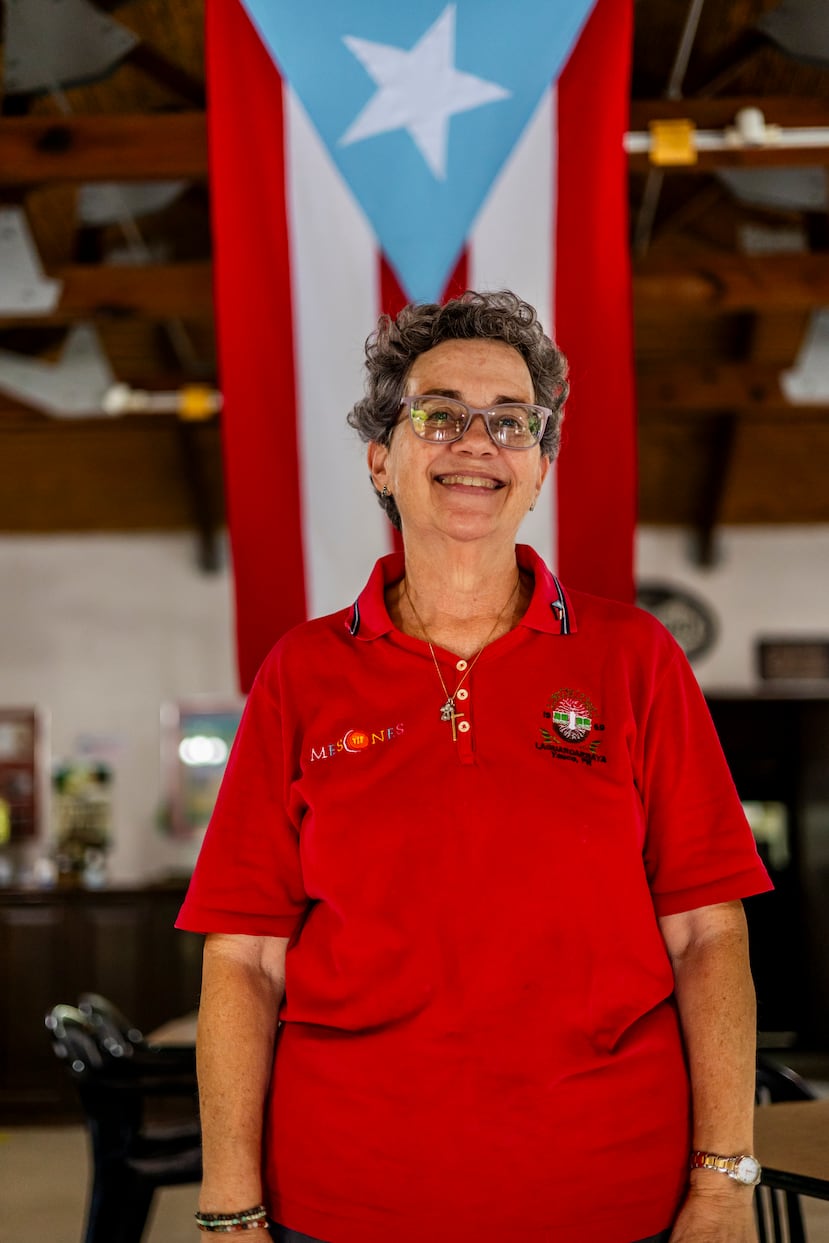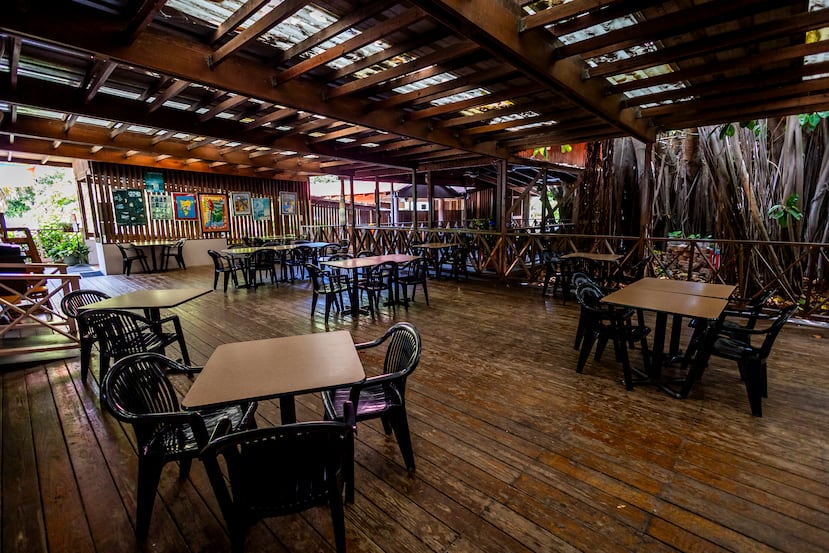
The recipe, created 65 years ago, came about at the request of a curious customer
The recipe, created 65 years ago, came about at the request of a curious customer
March 14, 2024 - 11:00 PM

Lee la historia en español aquí.
Guayanilla.- The famous can-can pork chop, which characterizes the Puerto Rican recipe book, was born 65 years ago at La Guardarraya Restaurant, located on the border between Guayanilla and Yauco.
According to the story, a customer named Rodulfo had arrived at the restaurant. He asked its owner, Juan Vera-Martínez, why he did not just fry the meat with its skin and everything attached. So the man pleased his friend by cutting up a piece of tenderloin and throwing it into the pan to brown it.
Upon seeing the result of his request, the customer exclaimed: “You brought me a can-can!” He was referring to the type of petticoats with starched ruffles that women wore back in the 1950s. This soon reached the ears of other people who from then on came to the restaurant to have a taste of the can-can pork chop.
This is how Doralisa Vera-González, daughter of the original owner, tells it. She was in charge of documenting the origin of the popular recipe that was created by her father, who also operated the Loma Bonita cockfighting ring in Yauco and had learned to cook while he was in the army.

“Dad was the one who invented the can-can pork chop, and it became the restaurant’s icon. This happened around 1958; one of dad’s friends, who was a lawyer, tells him: ‘Why not keep the skin on the pork chops when you make them?’ Then, dad went, made the cut he thought was right, and fried it,” said Dora González’ daughter.
“It was the 1950s, when can-can petticoats were in fashion. They made the skirt look ‘floaty.’ The friend told him: ‘Oh! This looks like a can-can.’ The next day, he came and said: ‘Make me one of those can-cans.’ And people began to ask for can-cans,” said Dorita, 64, who studied an animal science degree at the University of Puerto Rico in Mayagüez.
Then, Don Juan continued developing the recipe. It took him about eight years to do so.
“Right now you order a can-can and it’s ready in 15 minutes. But back then it took 30 minutes. We already have a recipe and tricks that help speed up the process. It’s pork loin, which is minced and made into the right cut, which is much broader. It weighs like three pounds,” she explained.
“I don’t buy can-can pork chops, instead only a few of us cut the loin. Everyone who sells can-can pork chops buys them already cut, and those come from Canada, Chile, Poland… they’re sold like that because of us,” she insisted, detailing that the restaurant opened on July 4, 1959.
In fact, the location of the restaurant has also been debated for decades, since it was founded in the so-called “pueblo del café” (“coffee town”). But with the construction of the PR-2 highway, formerly a military area, the delimitation of their land was included into Guayanilla. This is why it is called “La Guardarraya” (“The Boundary”).

“It’s an adjacent area and for a time it was difficult to determine its location. Originally, if you look at the plans, it was mostly inside Yauco. When they built the bridge, they left a sign down there that says, ‘Regional Limit’ between Ponce and Mayagüez,” she explained, showing two old public telephones that remain at the restaurant.
“There wasn’t even a telephone here until a few years later. Our telephone number is 856 (Yauco area code). There’s a public telephone inside the property that belongs to Yauco, but at the entrance there’s another one that belongs to Guayanilla,” she said.
It was in 1993 when her father asked her to take over the business, along with her brother Juan who had just graduated as a veterinarian and, at that time, was living in the United States.

This way, the building was rebuilt, while its gastronomic offering that specialized in criollo food, continued to grow.
The restaurant generates about 12 jobs, in a space that consists of two rooms with a capacity for 70 people. There is a third available area that is used on an as-needed basis.
The menu begins with the house’s signature dish, the can-can pork chop, followed by the carne mechada (shredded meat).
“We always look for consistency in the dishes and cook it the same way our grandmothers did. The cooks are taught how to do it the old-fashioned way,” she said. She mentioned that her older sister, Anabis, who is a doctor by profession, also helps her with administrative tasks and with shopping.

They also make beef fillet with onions, breaded, or battered, as well as chicken that is available either fried and in garlic, or chicken breast breaded or buttered as well. They also have shrimp that is breaded, battered, in garlic, or as cocktail.
“Here they cook with achiote (annatto), like before. Chicharrones de pollo are made with boneless chicken thighs. Another favorite is the mamposteao criollo rice, because the pink beans are softened. We also have mofongo, cream of potato and bacon, and cream of broccoli and cheese,” she explained when explaining part of the menu.
As for desserts, the vanilla flan stands out, a recipe created by her grandmother, kans well as casquitos de guayaba (guava shells), papaya with white cheese and tres leches.
Las noticias explicadas de forma sencilla y directa para entender lo más importante del día.


Te invitamos a descargar cualquiera de estos navegadores para ver nuestras noticias: